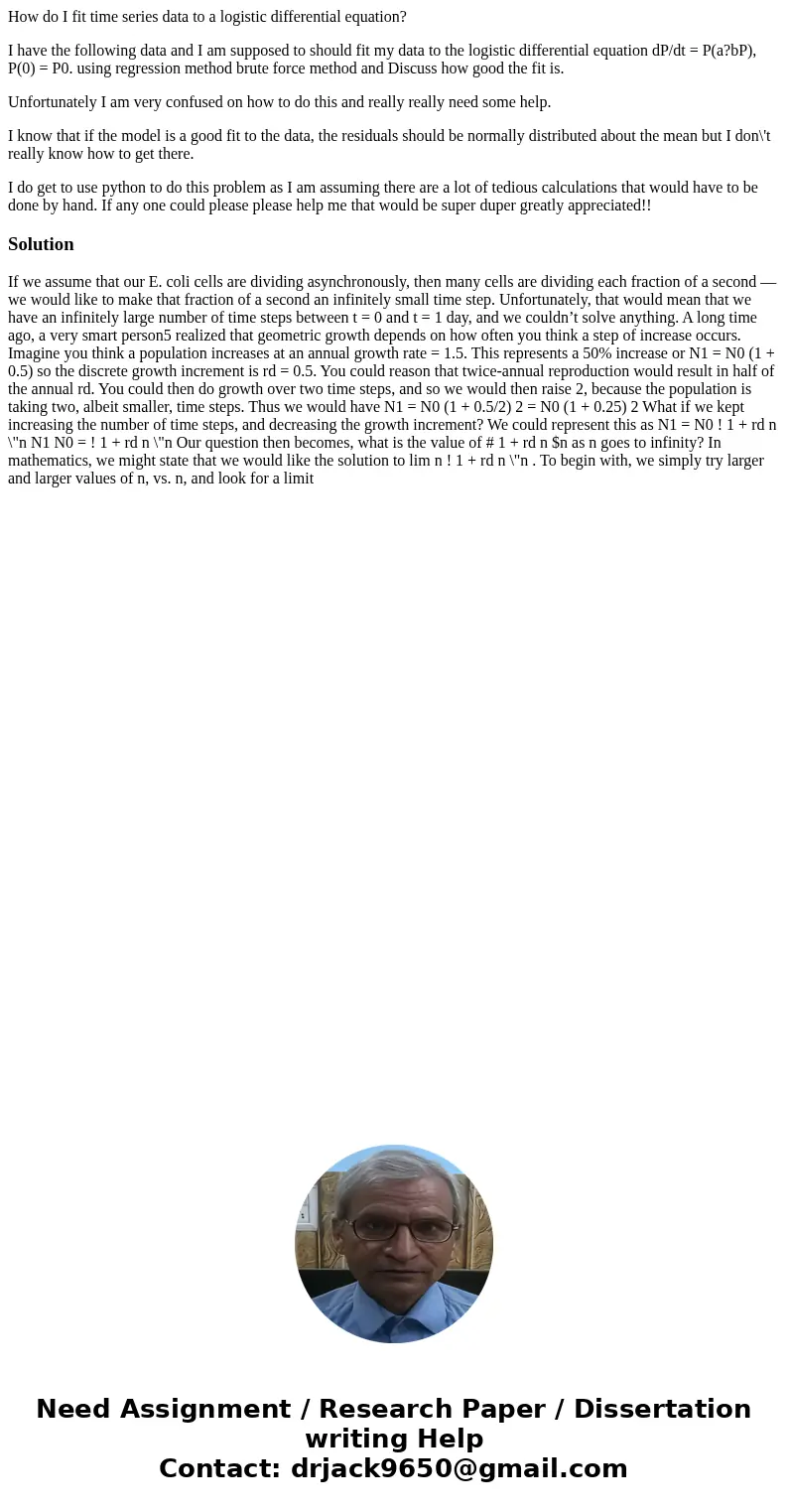How do I fit time series data to a logistic differential equ
How do I fit time series data to a logistic differential equation?
I have the following data and I am supposed to should fit my data to the logistic differential equation dP/dt = P(a?bP), P(0) = P0. using regression method brute force method and Discuss how good the fit is.
Unfortunately I am very confused on how to do this and really really need some help.
I know that if the model is a good fit to the data, the residuals should be normally distributed about the mean but I don\'t really know how to get there.
I do get to use python to do this problem as I am assuming there are a lot of tedious calculations that would have to be done by hand. If any one could please please help me that would be super duper greatly appreciated!!
Solution
If we assume that our E. coli cells are dividing asynchronously, then many cells are dividing each fraction of a second — we would like to make that fraction of a second an infinitely small time step. Unfortunately, that would mean that we have an infinitely large number of time steps between t = 0 and t = 1 day, and we couldn’t solve anything. A long time ago, a very smart person5 realized that geometric growth depends on how often you think a step of increase occurs. Imagine you think a population increases at an annual growth rate = 1.5. This represents a 50% increase or N1 = N0 (1 + 0.5) so the discrete growth increment is rd = 0.5. You could reason that twice-annual reproduction would result in half of the annual rd. You could then do growth over two time steps, and so we would then raise 2, because the population is taking two, albeit smaller, time steps. Thus we would have N1 = N0 (1 + 0.5/2) 2 = N0 (1 + 0.25) 2 What if we kept increasing the number of time steps, and decreasing the growth increment? We could represent this as N1 = N0 ! 1 + rd n \"n N1 N0 = ! 1 + rd n \"n Our question then becomes, what is the value of # 1 + rd n $n as n goes to infinity? In mathematics, we might state that we would like the solution to lim n ! 1 + rd n \"n . To begin with, we simply try larger and larger values of n, vs. n, and look for a limit

 Homework Sourse
Homework Sourse